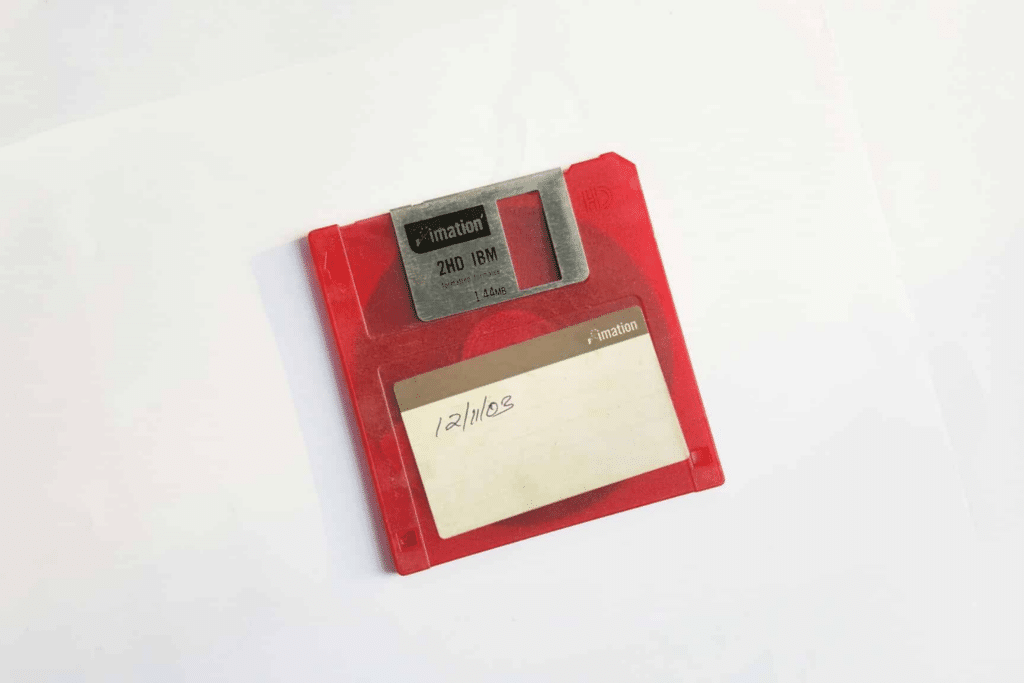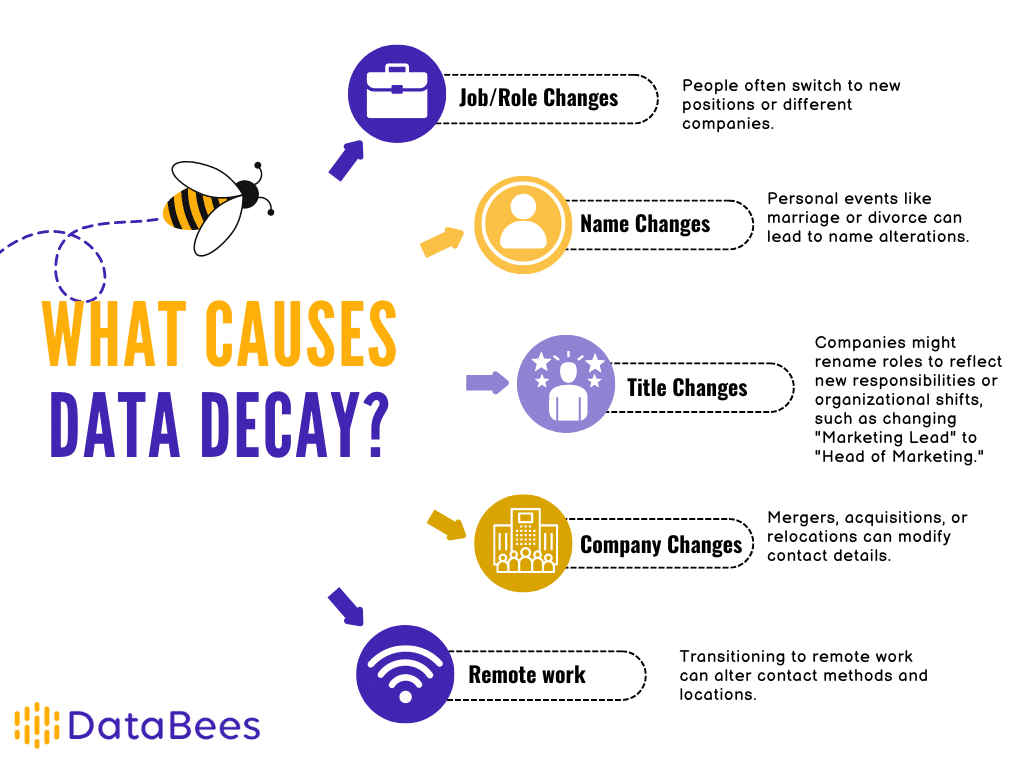How DataBees Helps You Avoid Data Decay

Jump to a section
Subscribe to our newsletter to get guides sent directly to your inbox!
Don't forget to share this post!
Maintaining accurate and up-to-date sales, prospect, and customer data is crucial in B2B sales. Failing to do so costs businesses billions annually due to wasted resources and inefficiency. In fact, IBM estimated that in 2016, poor-quality data cost the US around $3.1 trillion annually.
So, to keep our databases in top shape, we need to avoid data decay.
Data decay occurs when information slowly ages and becomes incorrect, making all the data we collected along the way worthless. To prevent this, we need to stay ahead of the game and use tools and processes that keep our data fresh and accurate.
In this article, we’ll briefly discuss the impact of data decay and offer a solution for keeping your data from going stale.
What Causes B2B Data Decay?
In the B2B context, data decay is an inevitable consequence of changes in business operations and human life. Multiple factors influence data decay, ranging from human errors during data entry to software glitches that compromise data integrity.
Some of these include but are not limited to:
- Job Changes: People often switch to new positions or different companies.
- Name Changes: Personal events like marriage or divorce can lead to name alterations.
- Role Changes: Company restructuring may result in role consolidation or elimination. For instance, a Senior Marketing Manager role might merge into a VP of Marketing position or become “Marketing Manager.”
- Title Changes: Companies might rename roles to reflect new responsibilities or organizational shifts, such as changing “Marketing Lead” to “Head of Marketing.”
- Company Changes: Mergers, acquisitions, or relocations can modify contact details.
- Shift to Remote Work: Transitioning to remote work can alter contact methods and locations.

As we can imagine, these changes in data can create many roadblocks for the sales teams.
What are the Consequences of Data Decay?
If your data isn’t kept current, your team faces several challenges. Inaccurate data eats away at sales reps’ productive time and each misdialed number or outdated email account means wasted effort that could have been spent on actual selling.
Additionally, poor data quality can create negative experiences for customers, prospects, and your team. Misspelled names, undelivered messages, and communication mix-ups are just a few consequences of bad data. These seemingly minor errors could prevent you from effectively reaching your target audience.
Some of the problems sales teams will encounter as a consequence from data decay are:
- Hunting for New Details: Time-consuming and inefficient.
- Bouncing Emails: Damages domain health and email deliverability.
- Wasting Time: Pursuing outdated or incorrect leads.
- New Contacts Ignoring Outreach: They don’t recognize your communication or your relevance.
Unchecked data decay can kill team efficiency and cause frustration, with teams dealing with outdated, redundant, or duplicate data.
The Importance of Up-to-Date Data
With accurate, updated information, your follow-ups become more personal and effective.
Personalization is more than just a touch of familiarity, it’s a powerful way to demonstrate to your customers that you understand them. By tailoring your communications to their specific needs and interests, you foster trust and confidence in the recommendations and information you provide.
When customers feel that you genuinely care and that communications are directly targeted at them, they are more likely to be receptive to you.
How does DataBees Help?
DataBees specializes in keeping your contact lists fresh and up-to-date, preventing the negative impacts of data decay.
Here’s how we help:
Depending on your sales engine, DataBees can supply your team with a steady flow of fresh prospect data. You can use this to add new accounts and contacts to your CRM or update existing account and contact data.
We have a dedicated lead research team that dives deep into your lists to uncover the information you need manually. They comb through the information available to identify and evaluate leads that match your Ideal Customer Profile (ICP) criteria.
Consider this approach: You’re reaching out to the VP of Marketing at a company, and if you know nothing about them other than their role and name, the message will seem quite dull. Worse, you may end up reaching out to the wrong person.
Personalize your message
However, if you get your data enriched and make sure it is up to date, you will be able to be more precise, personal and human.

Such personalized messages can rekindle relationships and foster new opportunities. That extra knowledge of who you’re contacting makes all the difference.
By partnering with DataBees, you ensure that your sales and marketing teams always have the most accurate data, allowing them to focus on what they do best: building relationships and driving growth.
Keep your contact lists fresh and avoid the pitfalls of data decay with DataBees. Let us handle the data so you can focus on your customers. [Get in touch with us]
Photo by Fredy Jacob on Unsplash
Get started with a sample
Test our service, free of charge!